The numerous museums located on the campus grounds add to the vibrant atmosphere of the University's cultural and educational environment.
Museum of RSAU-MTAA History
Загрузка... 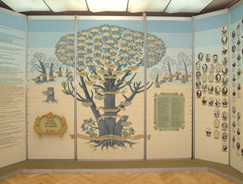 Загрузка... 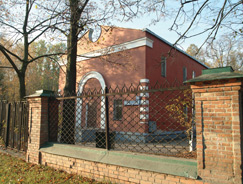 Загрузка... 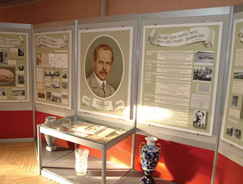 |
The Museum of University History is a living chronicle of the creation and development of the oldest agricultural education institution in Russia. It is located inside a grand mansion in the campus' ancient park. Five museum halls display a documentary collection of items related to the most important periods in the history of the Timiryazev Academy and the development of agricultural science. Here, numerous visitors, including students, school children, and district residents can open the pages of history of the Academy, Moscow, and Russia.
The history of the Academy depicts the lives of scientists, faculty members, research scientists, and students who worked, lectured and studied at the Academy, as well as materials about the founders and the first leaders of the Academy and its scientific schools. Special exhibits display materials devoted to the outstanding scientists N.I.Vavilov, A.V.Chayanov, D.N.Kondratjev, and N.P.Makarov and their bright -- while simultaneously tragic -- lives and scientific creative work.
The exhibit in the largest hall is devoted to Timiryazev Academy students and professors who defended their Motherland during the Great Patriotic War (1941-1945) from fascist invaders and gave their lives for its freedom.
In the Jubilee Hall, one can see the “History Tree” -- a artistic visual representation of the University's structure throughout different periods of development.
Memorial flat of K.A.Timiryazev
Загрузка... 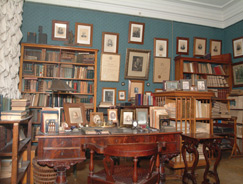 Загрузка... 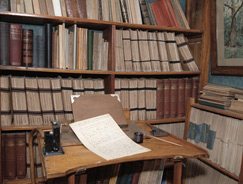 Загрузка... 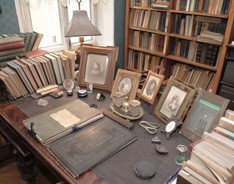 |
In 1920, The Resolution of the All-Union Central Executive Committee was passed “…to preserve and protect the study, library and manuscripts of K.A.Timiryazev”. According to this Resolution, the scientist's memorial study room was organized on May 26, 1942. Then, on April 25, 1946 it was passed to the Moscow Agricultural Academy and became the Memorial Flat of K.A.Timiryazev. Since 1960, the museum has been in the custody of the Russian government and included in the international reference book, “The World Establishments of Culture,” edited in London.
The Memorial Flat of K.A.Timiryazev serves an important function for cultural, academic and scientific work. Two Doctor’s and 15 Candidate’s dissertations have been defended using the museum's archives. In addition, many books and articles have been published on its archival material. The archives continue to be of great interest for researchers, and even the furniture of the flat is frequently studied by designers.
Museum workers take great care, therefore, to preserve the furniture, library and archives of the flat, as well as photo negatives, drawings and devices created by K.A.Timiryazev. The museum contains 29000 archive-preservation units. On the 160-year anniversary of K.A.Timiryazev's birth, a “Museum Guide” and “Invitation” for visitors were published. The life of the outstanding scientist is of great interest to our contemporaries; students, school children, residents and visitors of Moscow often visit the museum.
Museum of Minerals and Geology
Загрузка... 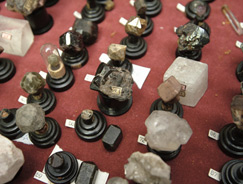 Загрузка... 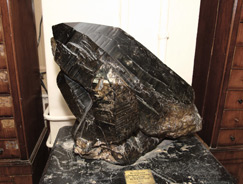 |

The Museum of Minerals and Geology has existed for more than 135 years. In 1867, I.B.Auerbakh, the founder of the Geology and Mineralogy Department and its first Chair bequeathed his large collection of minerals and fossils to the Petrovskaya academy. The museum's collection was broadened considerably when G.A.Traunshold, as head of the mineralogical studies, took measures to strengthen the collection and its systematization. By the beginning of the 20th century, the collection of minerals and rocks totaled over 4000 units. In 1905, E.S.Fedorov, another head of mineralogical studies, further enriched the collection by adding numerous minerals and rocks collected by him in the Middle Urals, the Caucasus, the Murmansk coast of the White Sea and also rock samples from Finland, Kazakhstan, and Transbaikalia. Professor Y.V.Samoilov continued the expansion of the museum's collections, and also organized the first museum of agro-industrial ore. More samples of agro-industrial ore gathered by Professor E.I.Kantor in prewar times further improved the collection. The museum also holds exhibits donated by the outstanding scientists B.I.Vernadsky, V.A.Obruchev, V.V.Nikitin, and others. At present, the museum stock consists of about 12000 samples. There is also a unique collection of fossils and meteorites.
V.R.Williams Soil-Agronomic Museum
Загрузка... 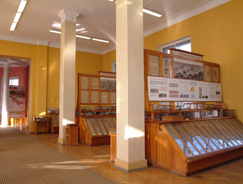 Загрузка... 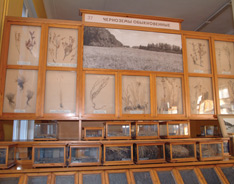 |
This museum was founded in 1934 on the special Decree of the Soviet Government in commemoration of the 50-year anniversary of scientific and pedagogic activity of V.R.Williams. During the period 1888-1939, V.R.Williams and his students collected thousands of different soil columns, samples of soil horizons, rocks, and herbs. These items are now displayed in accordance with soil-geographical demarcation. Peculiarities of soils in some regions of Russia, CIS-countries and foreign countries are also on display. At present, the world largest soil collection is housed within the museum. Several generations of soil scientists, geographers and geo-botanists took part in its collection – A.N.Sokolovsky, V.P.Bushinsky, N.M.Tulaikov, P.A.Manteifel, N.I.Savinov, V.A.Frantseson, S.P.Yarkov, O.S.Rostovtseva, M.P.Grigoryeva, N.E.Emelyanov, A.N. Shurigin, and others.
The N.I.Kulagin Museum of Zoology and E.F.Liskun Animal Science Museum display the diversity and richness of the animal kingdom. Their exhibitions are devoted to the history of the development of animal-production science, the origin of domestic animals, the evolutionary process of cattle, and the breeding process of national stocks.
Horse Breeding Museum
Загрузка... 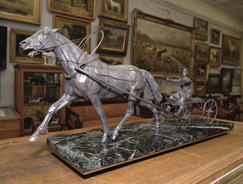 Загрузка... 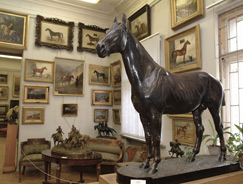 Загрузка... 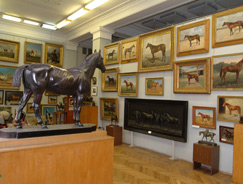 |
The University takes great pride in its Horse Breeding Museum. The art collection devoted to horses is the largest in the world, numbering 3000 pieces with both educational and esthetic value. Wonderful paintings by N.E.Sverchkov, the Russian patriarch of animal-themed art, and pieces by V.A.Serov, M.A.Vrubel, A.O.Orlovsky, M.B.Grekov, A.A.Plastov, and many others are displayed here.
Museum of the Chair of Animal Anatomy, Histology and Embryology
Загрузка... 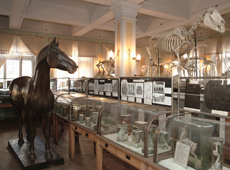 |
The Museum of the Chair of Animal Anatomy, Histology and Embryology was founded as an instructional and scientific subdivision of the Chair in 1934. Since 1936, the collection of the museum has stretched across two floors of the department's academic building: instructional exhibits are displayed on the first floor and scientific exhibits on the second. Items are arranged according to collections belonging to famous scientists: the collection of V.Y.Brovar features a locomotor system in its comparative and age-related aspects, a collection of B.K.Gindse displays the mammal and human brain vessels, and a collection of V.I.Ippolitova shows a nervous system of domestic mammals.
Bee-Keeping museum and Training and Research Apiary
Загрузка...  |
The Bee-Keeping Museum and Training and Research Apiary were founded in 1868 on the initiative of Professor I.N.Chernopyatov. In the following years, the museum activities were connected with the names of academician N.M.Kulagin, professors N.P.Chirvinsky, P.N.Kuleshov, P.N.Veprikov, A.F.Gubin, and G.A.Avetisyan. In the museum and apiary students familiarize themselves with bee life and behavior and develop skills of bee-keeping. The personnel of the museum and the apiary are involved in consultative work with amateur bee-keepers from Moscow and Moscow region.
Gardens, Parks and Forest Research Station (Dacha)
More than half of the total area of the University (370 hectares) is actively used for planting, including a forest research station, an ancient park, Dendrological garden (arboretum), the Michurin orchard, and numerous squares and flower beds. The forestland of the University is of great historical and scientific importance, and its research station is a cradle of Russian forestry -- a unique forest oasis, the “green lung” of Moscow.
The green riches of the Forest Research Station are the work of generations of scientists. Besides the major Russian tree species, there are about 50 foreign species, as well. In Europe, it is the one and only museum of diverse forest plantings and the base for stationary research. In addition, over 80 bird species inhabit this forestland.
Загрузка... 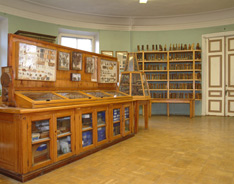 Загрузка... 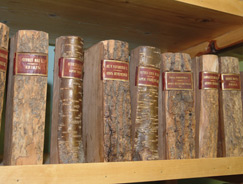 |
The R.I.Shreder Dendrological Garden, located in the center of the University, was laid out two years before the foundation of Petrovskaya Academy. At present, the Garden occupies 12 hectares, and about 500 different tree and shrub species originating from Europe, Asia and North America are grown here. The layout of the Garden collection is specifically designed for the instruction of students during excursions and lab work. The immense collections of trees and shrubs create a beautiful landscape, making the Garden the masterpiece of park-gardening technique. The park and Dendrological Garden are on the list of park and garden monuments protected by the government.
The Botanical Garden of the University was founded in 1896. About 3000 plant species are in its collection, and more than 500 species of tropical and subtropical plants are grown in a hothouse.
The Michurin Orchard ranks among the best in diversity of fruit trees in the middle region of Russia, and its tree nursery supplies planting stock for many of the non-black soil regions throughout Russia.
